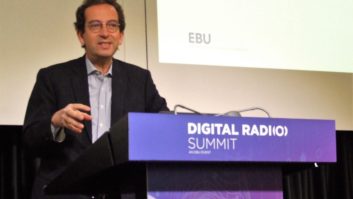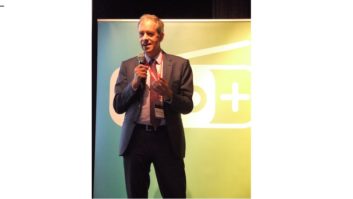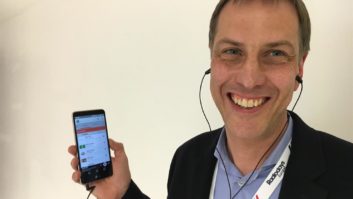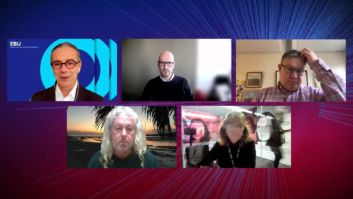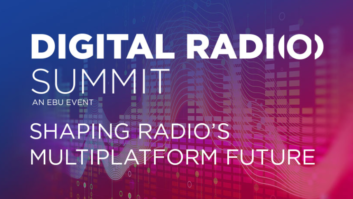
More than 60 radio professionals from EBU affiliates attended the New Radio Day conference in Prague on Oct. 17. (Credit: Wim Moortgat, VRT)
PRAGUE — Earlier this year, commercial and public service radio broadcasters from the Czech Republic announced the establishment of a DAB Forum to develop and promote DAB services in the country.
In the wake of this new digital development, more than 60 members of the New Radio Group from the European Broadcasting Union met in Prague Oct. 17 to discuss the direction radio is taking. According to Christian Vogg, EBU head of Radio, digital terrestrial radio in Europe is growing, but greater effort is required to secure radio’s digital future.
GREATER EFFORT
“Countries in Europe are moving at different speeds,” said Vogg. “The United Kingdom has achieved 94 percent technical coverage in the best part of two years. Norway is expected to be the first to switch-off FM frequencies within the next five years, and even in the Netherlands, which is facing severe budget cuts, technical coverage is at 70 percent,” he said.
“At the other end of the spectrum are countries like France, where trials are still taking place. What we can say, however, is that the point of no return has been reached. The debate is over. Terrestrial digital is the future of radio.”

Christian Vogg, EBU head of radio, welcomes the audience at the New Radio Day event. (Credit: Khalil Baalbaki, Czech Radio) During the morning sessions, delegates got a comprehensive overview of ongoing digital radio trends in some European countries. In the afternoon, the presentations explored the medium’s potential to enhance dynamic visual events, such as sports fixtures, while a roundtable discussion entitled “Is Radio Still Sexy To Work For?” emphasized the potential for radio to attract new talent.

Alistair Parrington, BBC Radio 1 and 1Xtra producer, addresses the audience during the Eurovision Academy conference on Visual Radio (Credit: Khalil Baalbaki, Czech Radio) The New Radio Day was followed by the Eurovision Academy conference on Visual Radio, which took place on Oct.18. During the event, participants pondered possible ways to manage visual radio content. Key topics included “how much is too much?” and “it’s just cheap TV,” and how to enforce synergies with partners like YouTube to attract young audiences.
Alistair Parrington, BBC Radio 1 and 1Xtra producer, told participants that YouTube represents a “defacto” way to reach young audiences who mainly access content through multimedia devices. “Understandably, some broadcasters are wary of entering into a partnership with YouTube — it’s tantamount to saying that traditional non-visual forms of radio are dead and that radio needs to be more like TV,” said Parrington.
“If, however, your goal is to engage young audiences, it’s naïve to ignore the power of YouTube and exploit its potential.” Parrington remarked that Radio 1, which targets 16–24 year olds regularly publishes bespoke content on YouTube, and that its follower base has increased from around 38,000 in May 2012 to 600,000 today.
“Don’t be afraid, without YouTube radio could be finished. Instead, it’s experiencing an exciting transition. The Internet forces you to engage. So does new radio. By contrast, TV is nothing more than an augmented form of radio,” he said.
Davide Moro reports on the industry for Radio World from Bergamo, Italy.






